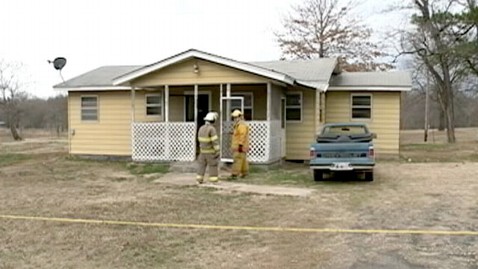Spontaneous Combustion Eyed in Oklahoma Man's Death
Police are probing the mysterious death of an Oklahoma man from what appears to be spontaneous combustion.
The charred remains of Danny Vandandt, 65, were found in the kitchen of his bungalow Monday, officials said. But the home itself was unscathed.
"It's a real mystery," Fort Smith Fire Marshal Ronnie Rogers told ABC affiliate 4029tv.com. "I really would like to see the coroner's report on this one."
CLICK HERE for more medical marvels.
Officials said smoke escaping from the windows of the home was the only sign of a fire, and what sparked the flames and fueled the blaze remain a mystery.
"I've never seen anything like it," Sequoyah County Sheriff Ron Lockhart said, adding that a plastic ice box 3 feet from the body, and the plastic handles of a nearby stove were intact with no signs of melting.
"Everything fits to a T," Lockhart said of the spontaneous combustion theory. "But it's still a theory. I don't know."
This is not the first time spontaneous combustion has been considered as a cause of death. In 2011, a U.K. court delivered the controversial verdict in the burning death of a 76-year-old Irishman whose charred body was discovered in his home with no trace of accelerant. Scorch marks from the fire were seen only on the ceiling above the body and the floor below.
"This fire was thoroughly investigated and I'm left with the conclusion that this fits into the category of spontaneous human combustion, for which there is no adequate explanation," West Galway coroner Dr. Ciaran McLoughlin told the court.
Proposed explanations for spontaneous combustion range from static electricity to divine intervention. One theory, called the wick effect, paints a person's clothes as a wick, of sorts, and their body fat as a fuel source. But the burning would take several hours, and the wick-effect theory fails to explain the absence of an ignition source or accelerant.
Some experts dismiss claims that such cases occur spontaneously, arguing instead that the flame's source, such as a match or cigarette, must be masked by the badly burned body. But the mystery continues to captivate, as it has for centuries.
Charles Dickens described the haunting scene in his 1853 novel "Bleak House."
"Here is a small burnt patch of flooring; here is the tinder from a little bundle of burnt paper, but not so light as usual, seeming to be steeped in something; and here is - is it the cinder of a small charred and broken log of wood sprinkled with white ashes, or is it coal? Oh, horror, he IS here!"
In 1951, Mary Reeser, 67, burned to death in her Florida home. Only her skull, left foot and ashes remained. But her apartment was intact, save some soot on the ceilings and walls.
"I cannot conceive of such complete cremation without more burning of the apartment itself. In fact, the apartment and everything in it should have been consumed," Wilton Krogman, an anthropology professor who investigated the case, reported at the time. "I regard it as the most amazing thing I have ever seen. As I review it, the short hairs on my neck bristle with vague fear. Were I living in the Middle Ages, I'd mutter something about black magic."
Larry Arnold, author of " Ablaze! The Mysterious Fires of Spontaneous Combustion," has three theories. The first posits that small, high-powered particles whizzing between the molecules of the body collide, an event he calls "the Internal Hiroshima Effect."
The second suggests Kundalini, a powerful energy flowing up and down the spine, becomes unbalanced, triggering a temperature spike. The third theory, based on the geographical clustering of alleged spontaneous combustion cases, credits the phenomenon to energy anomalies in the earth.

Police are probing the death of an Oklahoma man from what appears to be spontaneous combustion. (Image credit: ABC News)